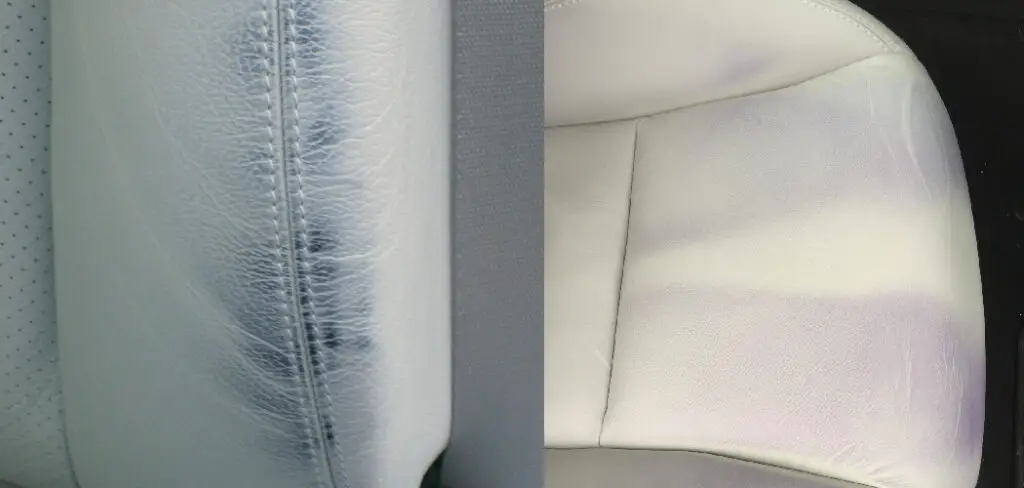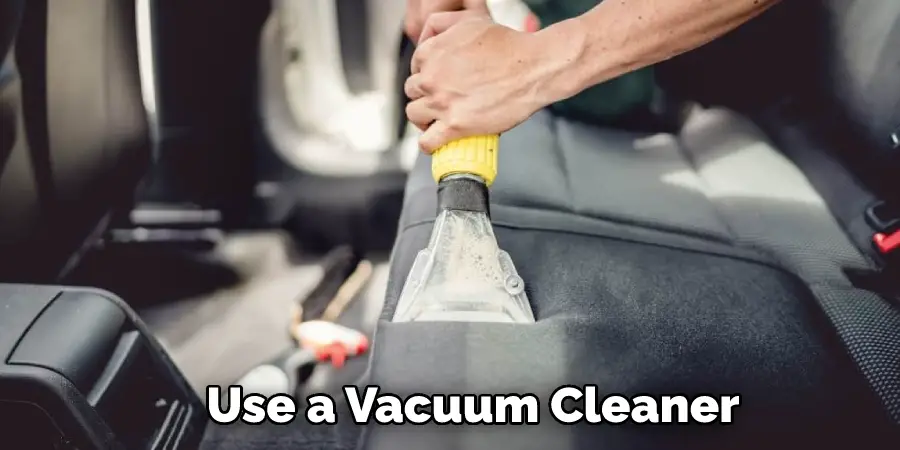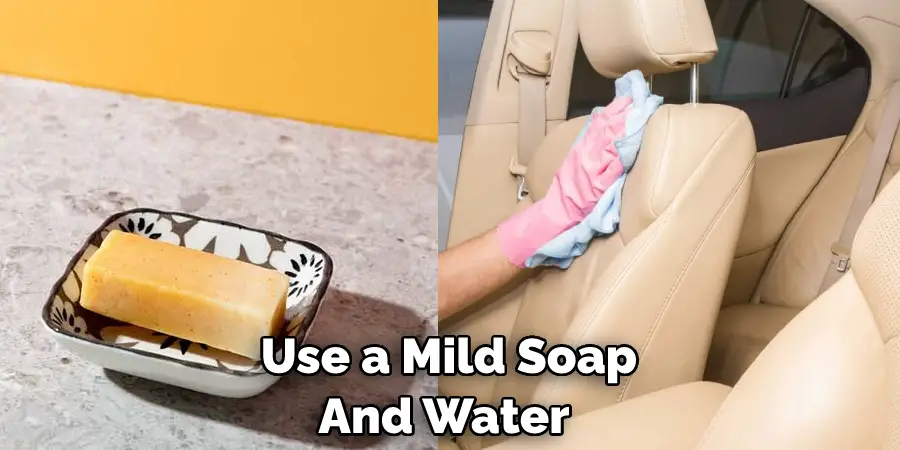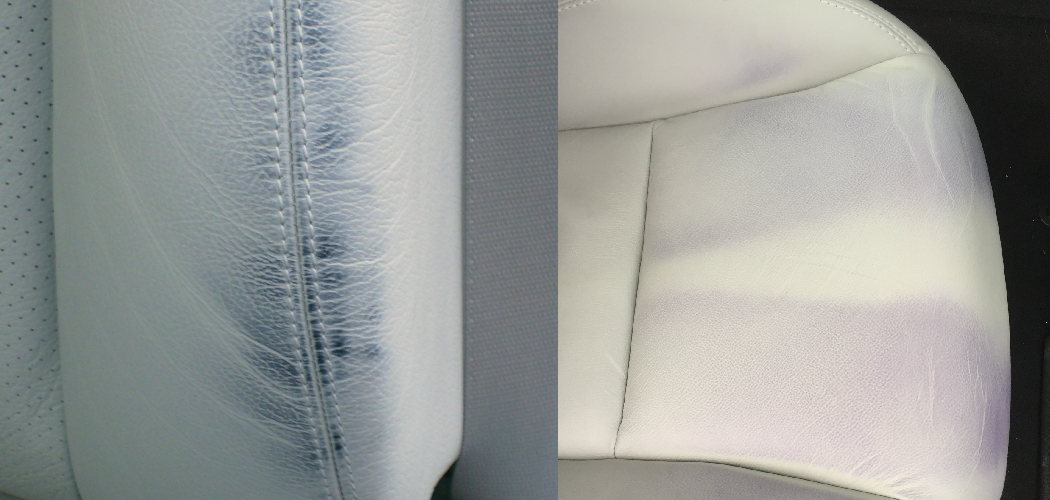Dye transfer is a common issue when it comes to leather. Whether you’re working with a new piece of furniture or a pair of shoes, it’s important to take the proper precautions to prevent any accidental staining. In this post, we’ll go over tips on how to prevent leather dye transfer and what to do if it happens. Let’s get started!

What Is the Cause for Leather Dyeing?
Many factors can cause the leather to lose color, including sunlight, pollution, and body oils. However, the most common cause of leather discoloration is contact with water. When water comes into contact with leather, it can cause the dye molecules to break down and wash away. As a result, leather that is regularly exposed to water is more likely to fade or change color over time.
In addition, certain types of leather are more susceptible to water damage than others. For example, aniline leather, dyed using a single colorant, is much more likely to fade than corrected-grain leather, which has a protective coating that helps seal in the dye.
Why It’s Important to Prevent Leather Dye Transfer?
Dye transfer is one of the most common problems faced by leather product owners. It occurs when the dye from one object rubs off onto another, usually through contact. The problem with dye transfer is that it can permanently damage the affected leather item.

In some cases, the dye may even rub off onto your clothing, furniture, or carpeting. For this reason, it’s important to prevent leather dye transfer.
9 Ways to Follow on How to Prevent Leather Dye Transfer
1. Be Careful With What You Wear
There are certain materials that are more likely to cause leather dye transfer than others. The most common culprits are denim and wool. If you’re wearing either of these materials, take extra care to avoid coming into contact with your leather furniture.
2. Use A Sealant, Protector, Or Waterproofer
Applying a sealant, protector, or waterproofer to your leather furniture is one of the best ways to prevent leather dye transfer. These products create a barrier between your leather and the outside world, which helps to repel water, dirt, and other debris that could cause staining. Look for a product specifically designed for use on leather, and be sure to follow the manufacturer’s instructions for application.
3. Keep Your Leather Clean
One of the best ways to prevent leather dye transfer is to keep your leather clean. Regular vacuuming and dusting will help remove any potential stains before they have a chance to set in, and spot-cleaning spills as soon as they happen will also help. Investing in a quality leather cleaner and conditioner is also a good idea, which will help keep your leather looking its best.

4. Avoid Getting Your Leather Wet
Water is one of the main culprits in leather dye transfer, so it’s important to avoid getting your leather wet whenever possible. If you must clean your leather furniture, be sure to use a mild soap and water solution, and avoid scrubbing or rubbing the leather too vigorously.
5. Store The Leather Properly
When you’re not using your leather furniture, it’s important to store it properly to prevent damage. Leather should be stored in a cool, dry place and protected from direct sunlight and heat sources. If possible, wrap your leather furniture in a cotton sheet or towel before storing it to help protect it from dust and dirt.
6. Use A Leather Conditioner
Leather conditioners help to keep your leather furniture hydrated and looking its best. They also create a barrier between your leather and the outside world, which can help to prevent dye transfer. Be sure to choose a conditioner specifically designed for use on leather, and follow the instructions on the packaging carefully.

7. Remove Stains As Soon As Possible
If a stain does occur, act quickly to remove it. The longer a stain sits on leather, the more difficult it will be to remove.
There are a few different ways that you can remove stains from leather. One way is to use a damp cloth to blot the area. You can also try using a leather cleaner or conditioner. If the stain is still present, you may need to use a stronger cleaner, such as saddle soap.
Another way to remove stains is to use a leather cleaning kit. These kits usually come with a variety of cleaners and conditioners that you can use. If the stain is stubborn, you may need to use the sanding pad included in the kit.
8. Avoid Prolonged Exposure To Direct Sunshine
Leather furniture can fade over time if exposed to too much direct sunlight. So if you have leather furniture, try to keep it out of direct sunlight whenever possible. You can also use window treatments to help protect your furniture from the sun’s harmful rays.
9. Avoid Using Ammonia-Based Cleaners
Ammonia-based cleaners can damage leather and cause it to dry out. If you must clean your leather furniture, use a mild soap and water solution. Avoid harsh chemicals or abrasive cleaners, as these can damage the leather’s finish.
That’s it! You’ve now learned how to prevent leather dye transfer. By following these simple tips, you can help keep your leather furniture looking its best for years to come.
What Are Some Common Causes of Leather Dye Transfer?
Leather is a natural material that has been used for centuries to make clothing, shoes, and other items. It is durable and has a unique appearance that can be enhanced with dyes. However, leather dye transfer is a common problem that can occur when leather comes into contact with another object.

The most common causes of dye transfer are rubbing or abrasion, moisture, and heat. For example, if you wear a leather jacket while riding a motorcycle, the friction from the wind and road can cause the dye to rub off onto your clothes. Similarly, the moisture can cause the dye to bleed if you store leather in a humid environment.
Finally, if you leave the leather in direct sunlight or expose it to high temperatures, the heat can cause the dye to fade. To avoid these problems, it is important to store leather in a cool, dry place and protect it from direct sunlight.
How Can You Tell if Your Leather Is Stained?
Anyone who owns leather furniture knows it’s important to keep it clean. Leather is a natural material that can be susceptible to staining if it’s not properly cared for. Water stains are one of the most common stains on leather furniture. They typically appear as dark spots or rings and can be difficult to remove. If you suspect that your leather furniture has water stains, you can do a few things to confirm it.
First, check to see if the area is dry. If it’s still damp, that’s a good indicator that the stain is indeed a water stain. Next, look for other telltale signs of water damage, such as wrinkling or warping. Finally, try to blot the area with a dry cloth. Again, if the stain comes off on the cloth, it’s likely a water stain.
If you’re not sure how to deal with a water stain, it’s best to consult a professional. Leather experts have the knowledge and experience necessary to safely and effectively remove water stains from leather furniture.
What Are Some Methods for Removing Leather Dye Stains?
When it comes to removing leather dye stains, there are a few different methods that you can try. One option is mixing equal parts vinegar and water together and then using this solution to blot the stain. Another option is to make a paste out of baking soda and water, which can also be used to blot the stain.
If neither of these methods seems to be working, you may need to take the item of clothing to a dry cleaner or Leather specialist. Depending on the type of leather, they may be able to use a special solvent that will remove the stain without causing any damage.
In general, it’s always best to test any cleaning solution on an inconspicuous area of the leather before using it on the stain itself. Keep reading for more information about how to prevent leather dye transfer.
How Can I Stop My Clothes from Transferring Dye to My Leather Jacket?
Every time you wear your light-colored leather jacket, you get dye from your clothing transferred onto the jacket. It’s frustrating, and it seems like no matter how often you clean it, the issue persists. But there is a way to stop the dye from ruining your favorite piece of outerwear. The key is to treat the leather before you ever wear it.
First, start by applying a thin layer of leather conditioner to the surface of the jacket. Then, take a cotton ball soaked in white vinegar and rub it over areas that look particularly stained. Once you’re finished, let the jacket dry completely before putting it on. Taking these precautions can help ensure that your leather jacket stays looking its best for years to come.
Frequently Asked Questions
How Do You Stop Leather Dye From Bleeding?
If you’re looking for a way to stop leather dye from bleeding, you may want to consider using a protective layer. This will help to keep the dye from seeping through the leather and causing stains. Protective layers can be made from a variety of materials, including oils, waxes, and silicone. Once you’ve selected a protective layer, apply it to the leather using a cloth or applicator. Be sure to let the layer dry completely before using the leather again.
Why Does Leather Dye Rub Off?
Leather dye rubs off because it is an acid-based dye. The leather contains natural astringent agents that help to resist the development of spots and fading, but over time these agents can be depleted. This happens most noticeably when the product is exposed to heat or moisture. In this case, the colorfast properties of the dye are no match for its non-colorfast components, which leads to rubbing and eventual loss of color.
Does Leather Dye Transfer?
Yes, leather dye can transfer to other materials. However, it’s usually only a small amount that will be transferred and it can easily be removed with soap and water.
Can Vinegar Remove Dye Transfer?
Yes, vinegar can remove dye transfer. This is because the acid in vinegar breaks down the molecules that are responsible for color retention. Vinegar is a natural way to clean clothes and surfaces and can also be used as an alternative detergent.
Conclusion
If you’re looking for tips on how to prevent leather dye transfer, look no further. We’ve outlined four easy ways to help keep your clothes and furniture safe from accidental staining. Follow these simple guidelines, and you can enjoy your new leather piece without any worries!

